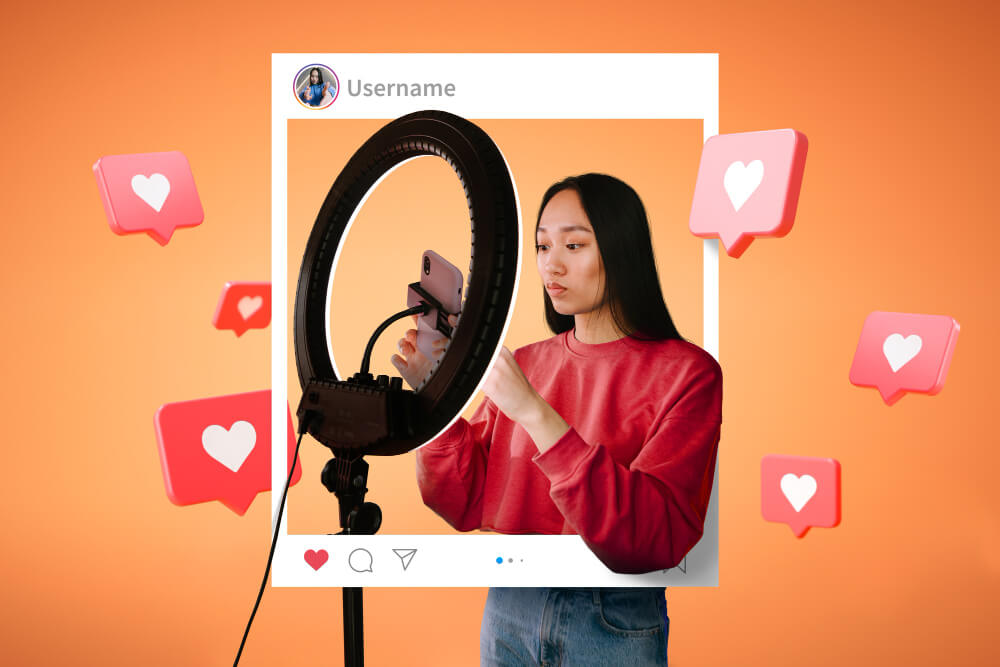
In today’s digital age, social media advertising has become an integral part of marketing strategies for businesses worldwide. With the ever-evolving landscape of social media platforms, staying ahead of the curve is crucial for brands aiming to reach and engage their target audience effectively. As we step into 2024, it’s essential to explore the latest trends shaping the realm of social media advertising and understand how they can impact marketing strategies. From personalized advertising to the integration of augmented reality, let’s delve into the exciting developments unfolding in the world of social media advertising this year.
Personalized Advertising
As we navigate through 2024, one of the most prominent trends in social media advertising is the continued advancement of personalized advertising. With the proliferation of AI and machine learning technologies, brands are increasingly able to tailor their advertising efforts to match the unique preferences and behaviors of individual users. This personalized approach not only enhances user experience but also maximizes the effectiveness of ad campaigns by delivering relevant content to the right audience at the right time. In this section, we’ll explore the rise of personalized advertising, its impact on consumer engagement, and strategies for harnessing its potential to drive business growth.
Rise of AI and machine learning in ad targeting
In 2024, the utilization of AI and machine learning algorithms for ad targeting has reached new heights. These sophisticated technologies enable advertisers to analyze vast amounts of user data, including demographics, interests, and online behaviors, with unprecedented accuracy. By leveraging AI-powered algorithms, brands can identify patterns and trends within this data to precisely target their advertising efforts towards audiences most likely to engage with their content. This not only optimizes ad spend but also enhances the overall effectiveness of campaigns by delivering relevant messages to specific segments of the target market.
Customized ad experiences based on user behavior and preferences
Another key aspect of personalized advertising in 2024 is the emphasis on delivering customized ad experiences based on individual user behavior and preferences. Social media platforms have become adept at tracking user interactions, from likes and comments to browsing history and purchase patterns. Leveraging this wealth of data, brands can create tailored ad experiences that resonate with users on a personal level. Whether through dynamic product recommendations or personalized messaging, these customized ad experiences foster deeper connections with consumers, driving higher engagement and conversion rates.
Examples of brands leveraging personalized advertising effectively
Numerous brands across industries have embraced personalized advertising as a cornerstone of their marketing strategies in 2024. For instance, e-commerce giant XYZ utilizes AI algorithms to analyze customer browsing and purchase history, delivering personalized product recommendations to users’ social media feeds. Similarly, ABC, a leading fashion retailer, tailors its ad content based on users’ style preferences and past interactions with the brand, resulting in higher click-through rates and customer satisfaction. These examples demonstrate how personalized advertising can drive tangible results for brands by delivering targeted messages that resonate with individual consumers.
Video Dominance
In the landscape of social media advertising in 2024, video content continues to reign supreme. The consumption of video content on social media platforms has witnessed exponential growth, driven by the popularity of short-form video formats and the rise of platforms like TikTok and Instagram Reels. This shift towards video content has reshaped advertising strategies, with brands increasingly prioritizing video ads to capture the attention of their target audience. In this section, we’ll explore the dominance of video in social media advertising, the surge of short-form video ads, and effective strategies for creating engaging video content that resonates with viewers.
Growth of video content consumption on social media
In 2024, the consumption of video content on social media platforms has experienced unprecedented growth. Users are increasingly turning to platforms like Facebook, Instagram, TikTok, and YouTube to consume video content, ranging from entertaining clips to informative tutorials and brand advertisements. This surge in video consumption can be attributed to several factors, including improved internet connectivity, the widespread availability of smartphones with high-quality cameras, and the inherently engaging nature of visual content. As a result, brands are capitalizing on this trend by incorporating video into their social media advertising strategies to effectively capture the attention of their target audience.
Shift towards short-form video ads (e.g., TikTok, Instagram Reels)
One of the most significant trends in social media advertising in 2024 is the increasing shift towards short-form video ads, particularly on platforms like TikTok and Instagram Reels. These platforms have popularized the creation and consumption of bite-sized video content, typically ranging from a few seconds to a minute in length. Short-form video ads offer brands a unique opportunity to convey their message quickly and concisely, catering to the short attention spans of today’s digital audience. By leveraging the creative features and viral potential of platforms like TikTok and Instagram Reels, brands can connect with their target audience in a memorable and impactful way, driving higher engagement and brand awareness.
Strategies for creating engaging video ads
Creating engaging video ads requires careful planning and execution to captivate the audience and deliver the intended message effectively. Some key strategies for crafting compelling video ads include:
- Grabbing Attention Quickly: Start your video with a captivating hook or visually striking imagery to grab the viewer’s attention within the first few seconds.
- Storytelling: Use storytelling techniques to create a narrative that resonates with your audience on an emotional level, making your brand message more memorable and relatable.
- Showcasing Benefits: Highlight the key benefits of your product or service early in the video to entice viewers and communicate value proposition effectively.
- Incorporating Brand Identity: Ensure that your brand identity is prominently featured throughout the video, including logos, colors, and visual elements, to reinforce brand recognition and recall.
- Interactive Elements: Incorporate interactive elements such as polls, quizzes, or clickable buttons to encourage viewer engagement and participation.
Influencer Marketing Evolution
In 2024, influencer marketing continues to evolve, transforming from a simple tactic of sponsored posts to a multifaceted strategy focused on authenticity, engagement, and niche audience targeting. The landscape of influencer marketing has shifted significantly, with brands recognizing the value of collaborating with influencers who possess genuine connections with their followers. This section explores the evolution of influencer marketing, the emergence of micro and nano influencers, and strategies for measuring ROI and effectiveness in influencer collaborations.
Evolution of influencer marketing beyond sponsored posts
In 2024, influencer marketing has transcended traditional sponsored posts, evolving into a more holistic approach that emphasizes authentic brand advocacy and meaningful engagement. Brands are increasingly partnering with influencers who align with their values and resonate with their target audience on a deeper level. This shift towards authenticity has led to the rise of influencer-created content that feels more genuine and relatable to followers. Beyond sponsored posts, influencer collaborations now encompass a variety of formats, including product reviews, branded storytelling, co-creation of content, and long-term ambassadorships. By fostering genuine relationships with influencers, brands can leverage their influence to authentically connect with consumers and drive brand awareness, trust, and loyalty.
Rise of micro and nano influencers for niche audience targeting
In 2024, there has been a notable rise in the use of micro and nano influencers for niche audience targeting in influencer marketing campaigns. Micro influencers, typically with follower counts ranging from 10,000 to 100,000, and nano influencers, with even smaller followings, offer brands the opportunity to reach highly engaged and specialized audience segments. Unlike macro influencers with millions of followers, micro and nano influencers often have more intimate connections with their followers and are perceived as more authentic and trustworthy. By partnering with influencers who have a deep understanding of specific niches or communities, brands can effectively target niche audiences, drive higher engagement rates, and achieve better return on investment (ROI) for their influencer marketing efforts.
Measuring ROI and effectiveness in influencer collaborations
In 2024, measuring the ROI and effectiveness of influencer collaborations has become increasingly important for brands seeking to optimize their marketing budgets and achieve tangible results. To accurately assess the impact of influencer campaigns, brands are adopting more sophisticated measurement strategies that go beyond vanity metrics such as likes and followers. Key performance indicators (KPIs) for measuring influencer ROI may include engagement rates, click-through rates, conversion rates, brand sentiment, and incremental sales. Additionally, brands are leveraging advanced analytics tools and attribution models to track the customer journey from influencer content to purchase, enabling them to attribute revenue directly to influencer collaborations. By implementing robust measurement frameworks, brands can gain valuable insights into the effectiveness of their influencer partnerships, optimize campaign performance, and allocate resources more efficiently to achieve their marketing objectives.
Social Commerce Integration
In 2024, the integration of social commerce has become a dominant force in the realm of e-commerce and digital marketing. Social media platforms have evolved beyond being mere channels for brand awareness and engagement to fully-fledged shopping destinations, where users can discover, research, and purchase products without leaving the app. This section delves into the seamless integration of social commerce into social media platforms, the emergence of direct purchasing options, and successful case studies illustrating the power of social commerce in driving sales and enhancing the overall customer experience.
Integration of e-commerce features into social media platforms
In 2024, social media platforms have undergone a significant transformation with the integration of e-commerce features, blurring the lines between social networking and online shopping. Platforms like Facebook, Instagram, Pinterest, and Snapchat have introduced various tools and functionalities to facilitate seamless e-commerce experiences for both users and brands. These features include shoppable posts, product tagging, in-app checkout, and integrated shopping catalogs, allowing users to discover and purchase products directly within the social media environment. By integrating e-commerce features, social media platforms are capitalizing on their massive user bases and engagement levels to create new revenue streams and enhance the overall shopping experience for consumers.
Direct purchasing options within social media apps
In 2024, social media apps have embraced direct purchasing options, enabling users to make purchases without ever leaving the platform. With the introduction of in-app checkout functionalities, users can browse products, select items, and complete transactions seamlessly within the social media app itself. This streamlined purchasing process eliminates friction points and reduces the likelihood of abandoned carts, ultimately driving higher conversion rates for brands. Additionally, social media platforms leverage user data and behavioral insights to personalize product recommendations and offer targeted promotions, further enhancing the shopping experience and increasing user engagement.
Case studies of successful social commerce campaigns
Numerous brands have leveraged social commerce to drive sales and achieve business objectives in 2024. For example, fashion retailer XYZ partnered with Instagram to launch shoppable posts featuring its latest collection. By tagging products in their posts, XYZ made it easy for users to shop directly from Instagram, resulting in a significant increase in online sales and engagement metrics. Similarly, food delivery service ABC collaborated with Facebook to implement in-app checkout, allowing users to order food without leaving the Facebook app. This integration streamlined the ordering process and enhanced convenience for users, leading to a substantial boost in orders and customer satisfaction.
Augmented Reality (AR) Advertising
In 2024, Augmented Reality (AR) advertising emerged as a dynamic and immersive way for brands to engage with their target audience on social media platforms. AR technology overlays digital elements, such as graphics, animations, or 3D models, onto the real world, enhancing user experiences and driving deeper engagement with brand content. This section explores the utilization of AR in advertising, the proliferation of AR filters and effects, and the potential of interactive AR experiences to drive sales and foster brand loyalty.
Use of AR filters and effects in advertising campaigns
In 2024, brands are harnessing the power of AR filters and effects to create innovative and interactive advertising campaigns on social media platforms. AR filters allow users to augment their reality by overlaying digital elements onto their photos or videos in real-time. Brands leverage this technology to create branded filters and effects that users can apply to their content, effectively turning them into brand ambassadors. Whether it’s trying on virtual makeup, virtually trying out products, or experiencing immersive brand storytelling, AR filters and effects enable brands to engage with their audience in a fun and memorable way, ultimately increasing brand visibility and driving user engagement.
Enhanced brand engagement through interactive AR experiences
In 2024, brands are elevating brand engagement through interactive AR experiences that immerse users in their brand story and products. Interactive AR experiences allow users to actively participate and engage with branded content, creating memorable and shareable moments. For example, a cosmetics brand may create an AR experience that allows users to virtually try on different shades of lipstick or experiment with makeup looks. By providing users with an interactive and personalized experience, brands can foster deeper connections with their audience, increase brand affinity, and drive purchase consideration.
Future potential of AR advertising in driving sales and brand loyalty
Looking ahead, the future potential of AR advertising in driving sales and brand loyalty is promising. As AR technology continues to evolve and become more accessible, brands will have new opportunities to create immersive and personalized shopping experiences for their customers. For example, retailers could use AR to allow customers to virtually place furniture in their homes before making a purchase or try on clothing virtually to see how it fits. By providing customers with these interactive and engaging experiences, brands can enhance the overall shopping experience, increase conversion rates, and foster long-term brand loyalty. Additionally, as AR technology becomes more integrated into social media platforms and mobile devices, brands will have access to a larger audience and new ways to reach and engage with consumers, further driving sales and brand loyalty through AR advertising.
Ethical and Privacy Concerns
In 2024, as social media advertising and technology continue to advance, ethical and privacy concerns have become increasingly prevalent. Users are becoming more aware of the potential implications of their data being collected and used for targeted advertising purposes. This section explores the ethical and privacy concerns surrounding social media advertising, the importance of data privacy and user consent, and strategies for brands to maintain trust and transparency with consumers.
Increasing focus on data privacy and user consent
In 2024, there’s a growing emphasis on data privacy and user consent in the realm of social media advertising. With heightened awareness of data breaches and privacy violations, users are demanding more transparency and control over how their personal information is collected and used by brands and platforms. As a result, brands are prioritizing ethical data practices and implementing robust consent mechanisms to ensure compliance with privacy regulations and maintain user trust. By being transparent about data collection practices and obtaining explicit consent from users, brands can demonstrate their commitment to protecting user privacy and foster positive relationships with their audience.
Regulations shaping the landscape of social media advertising
Regulations surrounding social media advertising have become increasingly stringent in 2024, as lawmakers respond to growing concerns about data privacy, misinformation, and online safety. Governments around the world are implementing new laws and regulations to regulate social media platforms and hold brands accountable for their advertising practices. These regulations may include requirements for transparent disclosure of sponsored content, restrictions on data collection and targeting practices, and penalties for non-compliance with privacy laws. Brands must stay informed about the evolving regulatory landscape and adapt their advertising strategies accordingly to ensure compliance and mitigate legal risks.
Strategies for brands to maintain trust and transparency with consumers
To maintain trust and transparency with consumers in 2024, brands must prioritize ethical advertising practices and proactive communication with their audience. Some strategies for achieving this include:
- Transparent Communication: Clearly communicate to users how their data will be collected, used, and shared, and provide easy-to-understand privacy policies and consent mechanisms.
- Honesty and Authenticity: Be honest and authentic in advertising content, avoiding deceptive or misleading practices that could erode consumer trust.
- Empowerment and Control: Empower users to control their privacy settings and preferences, allowing them to opt-out of targeted advertising or data collection if desired.
- Compliance with Regulations: Stay informed about relevant regulations and ensure compliance with data privacy laws and advertising guidelines in all jurisdictions where the brand operates.
- Accountability and Responsibility: Take responsibility for any mistakes or breaches of trust, and take proactive steps to address issues and restore consumer confidence.
Conclusion
As we conclude our exploration of the latest trends in social media advertising in 2024, it’s evident that the landscape continues to evolve rapidly, driven by technological advancements, shifting consumer behaviors, and regulatory changes. From the rise of personalized advertising and video dominance to the integration of social commerce and the emergence of augmented reality, brands are navigating an increasingly complex and competitive environment. Moreover, ethical considerations surrounding data privacy and user consent are reshaping the way brands engage with their audience and build trust.
In this dynamic landscape, brands must remain agile, adaptable, and ethically responsible to succeed in social media advertising. By embracing innovative technologies, prioritizing authentic engagement, and maintaining transparency with consumers, brands can capitalize on emerging opportunities and drive meaningful connections with their audience.





